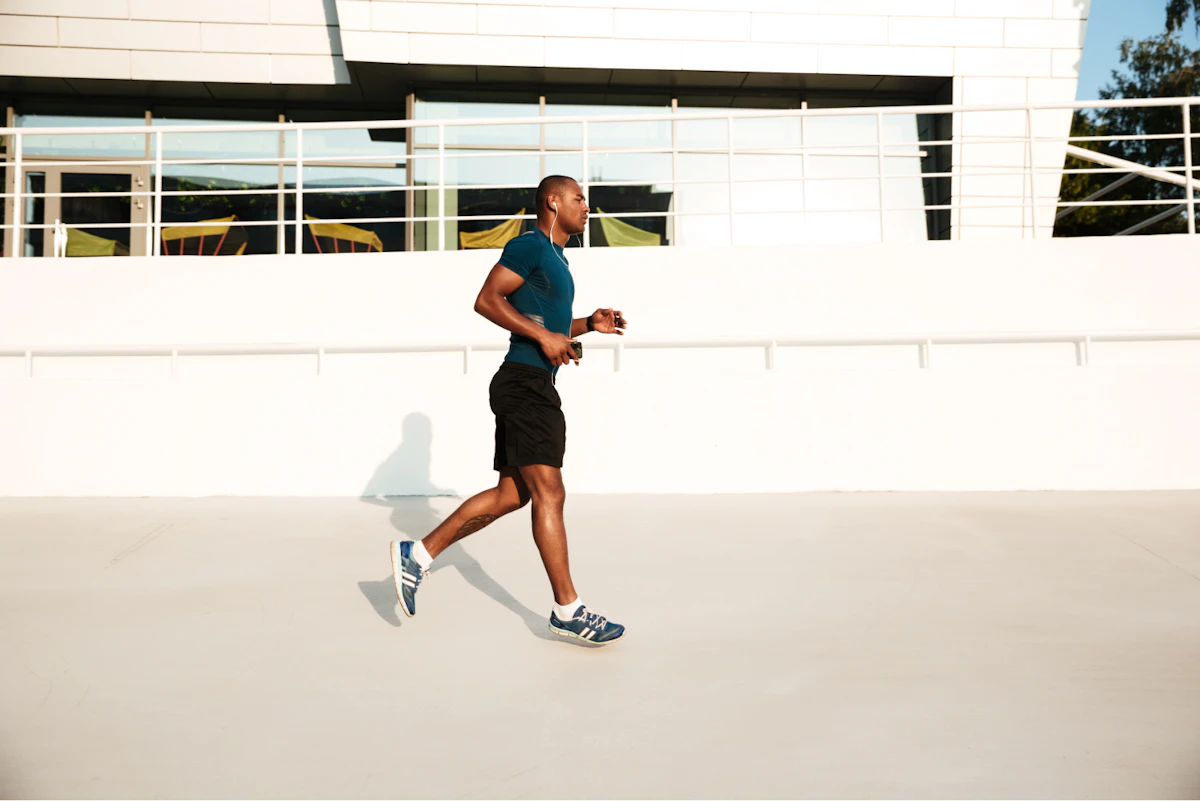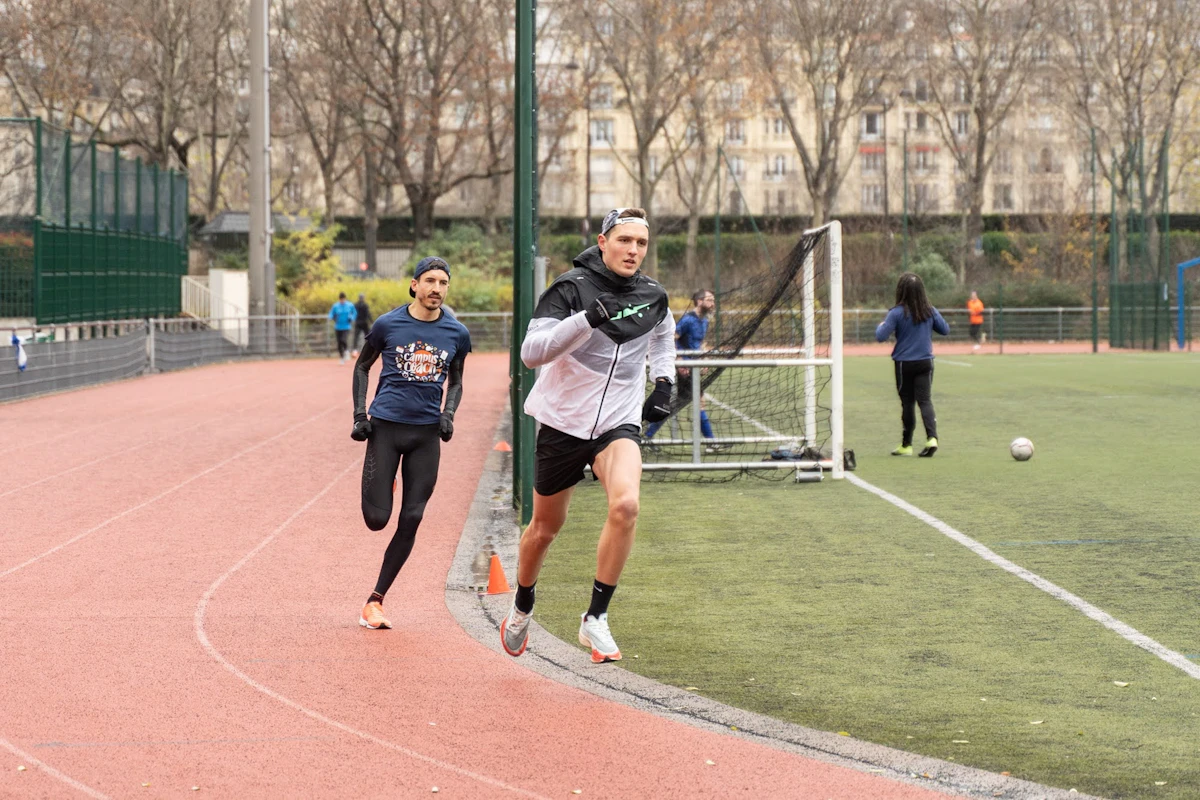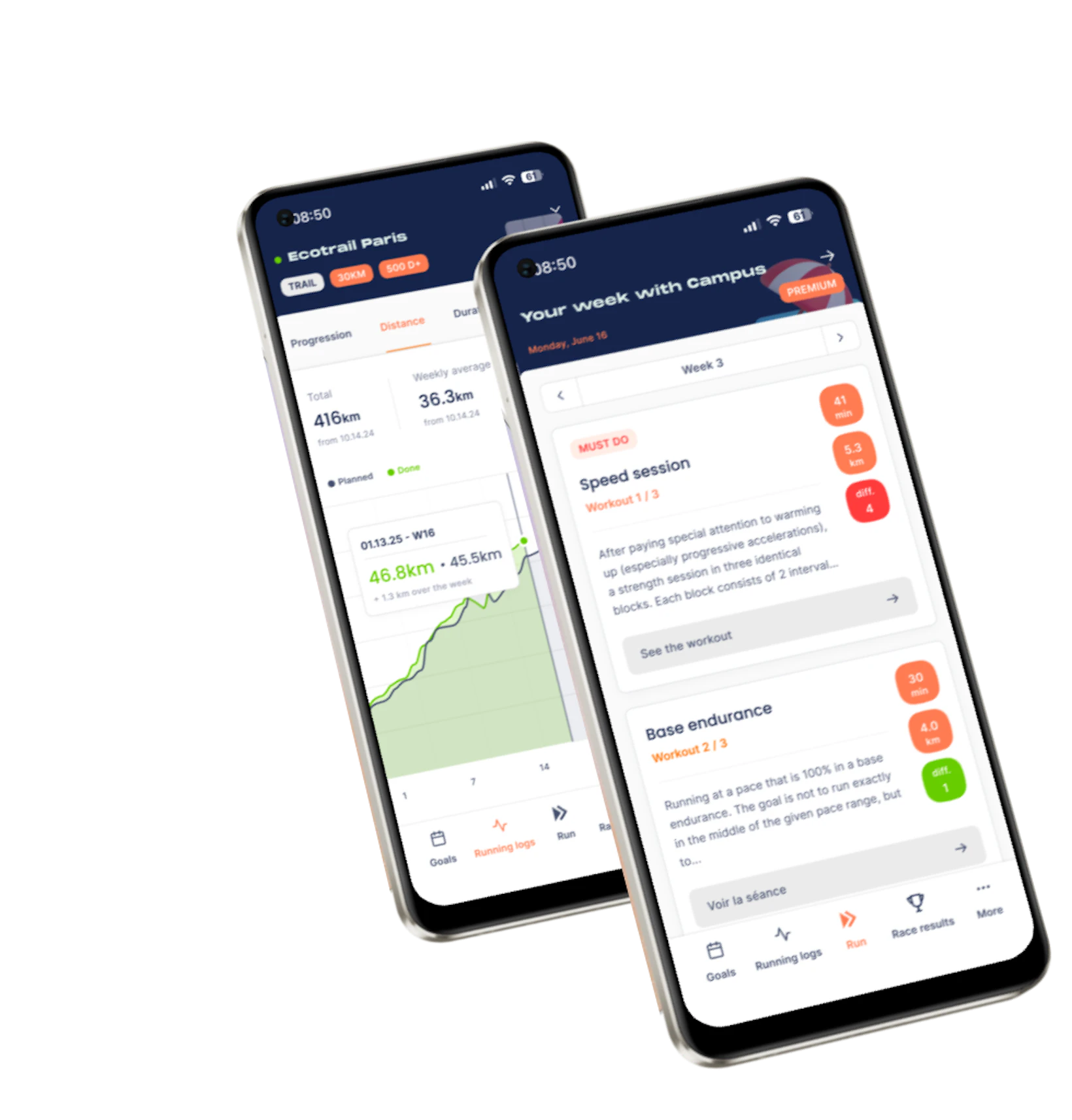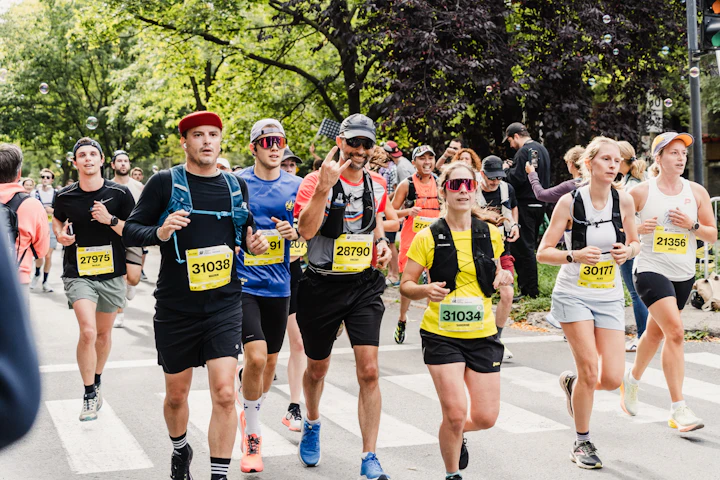How to build a good training plan for a 10k run

9 min read
Summary
1 hour, 50 min, 45 min, 40 min... How many weekly sessions for which goal?
Running your first 10 kilometers
10 km in 50 min to 1h
10 km in 45 min to 50 minutes
10 km in less than 40 minutes
How to train for a 10 km?
Frequency then volume then intensity
Training cycles of 3 weeks of development and 1 week of assimilation
Increasing difficulty of intensity workouts
How many weeks for your 10 km preparation?
What are the elements of a good 10K plan?
A good foundation of base endurance
What type of intervals to prepare for a 10 km?
Sessions at a specific 10 km pace
Campus-customized sessions

Receive advice from our passionate coaches!
Cycle planning, preparation duration, number of weekly sessions, training content... A good 10 km preparation must consider many parameters. You can already ensure to adhere to 2 principles that form the foundation of a good training plan.
The first principle to keep in mind is progression. It might be the most important of them all, this aspect integrates into all layers of your training: volume, intensity, or even frequency.
Then the second principle is diversity. Your plan will be more enjoyable and motivating if it is sufficiently varied. The aim of preparation isn't simply to get you to give your best on race day. A good variety of sessions will lead you to enjoy your practice daily.
1 hour, 50 min, 45 min, 40 min... How many weekly sessions for which goal?
Most generic training plans are conceived based on time objectives. At Campus, our approach is different. We don't start from your objective to create your training plan. Instead, we base it on your past experiences (your race times, injury history, current fitness) and the resources you're willing to invest in your practice. Only then do we offer you the choice between three race goals: realistic, cautious, and more ambitious. These three options are defined in relation to the level of resource you're willing to commit, the more resources available, the more load you'll have. Concretely, your initial potential and your capacity to train (duration of the plan and number of workouts per week) will affect your plan and future performance.
The following data are indicative. They will vary according to your profile (age, gender), starting physical condition, and sports background. To some extent, frequency is the foundation of planning, so the more sessions you have available, the higher the potential for developing the desired qualities. At the same time, the regularity of these frequencies is key to training progression. Four weekly one-hour sessions will have a greater impact than two two-hour sessions.

Running your first 10 kilometers
You're starting running. You don't have much time to dedicate to your new practice and your sole ambition is to complete your first 10 kilometers without worrying about the time. Two weekly sessions (for a total of about 15 to 20 km) may be sufficient. The primary advantage of the 10 kilometers is its accessibility to the widest range of people.
10 km in 50 min to 1h
Running a 10 km in one hour is about the average time achieved globally for this distance. In the comprehensive running survey conducted by Campus in 2024, this average time drops to 50 minutes for all genders combined. Maintaining a pace between 5 and 6 minutes per kilometer over 10 km isn't natural. We advise you to do at least 3 sessions per week (25 to 35 km). This allows for including a speed workout, an easy run, and a long run. According to us, it's the minimum to progress in running for the long term and beyond the "free" gains at the very beginning of practice.
10 km in 45 min to 50 minutes
Below 50 minutes (40-45 minutes for men and 45-50 minutes for women), you're starting to approach the front of the pack. To achieve this, you will need to develop your speed qualities and incorporate a good training volume. Your training plan will include at least 4 weekly sessions (40 to 50 km). Some profiles (young and athletic) may achieve it with 3 sessions, but 4 sessions ensure a better chance of reaching it.
10 km in less than 40 minutes
Below 40 minutes, each minute becomes harder to gain. A plan consisting of 5 weekly sessions (50 to 70 km) allows for a second intensity workout. This will aid you significantly in reaching new milestones. If you wish to optimize your potential and if you're willing to put in the effort, this training frequency is highly effective. It's possible to aim for times under 35 minutes with five weekly sessions for the most conditioned.
How to train for a 10 km?
The athlete who progresses is the one who remains injury-free. The absolute priority of a good training plan is to keep you injury-free. This involves well-thought-out planning and a smooth progression of training load (volume multiplied by intensity) to avoid overstraining your body.
Frequency then volume then intensity
In terms of progress, the best approach is to establish a good training frequency initially. Once you're used to running 3, 4, or 5 times a week, you can gradually increase workout volume and ultimately your weekly running volume. Finally, the last stage. When this frequency-volume foundation is well established, you can then increase the intensity of your workouts. The mistake would be trying to elevate all aspects simultaneously. This would lead to an overly rapid increase in training load. However, it has been shown that a rapid increase in training load is the leading cause of injury.
Training cycles of 3 weeks of development and 1 week of assimilation
The pair training + recovery is inseparable for making progress. One doesn't exist without the other. Hence the importance of recovering well between each intense workout and incorporating assimilation weeks during your preparation. We work in three-week training cycles, which will allow developing one or more qualities, then a lighter week between each training cycle. The lighter week allows for properly assimilating the completed training sessions and to be fresh, physically and mentally, to start a new training cycle of three weeks. This 3+1 planning has proven effective. It's the one we use in our Campus programs.

Increasing difficulty of intensity workouts
You'll find the same concept of progression in intensity workouts. Logically, each development cycle starts with relatively approachable sessions, then the difficulty gradually intensifies each week. For instance, if we want to develop your ability to run at your 30' Threshold (the pace you can sustain for 30 minutes, very important for 10 km preparation), we can start with a session of 12 x 400 meters at the 30' Threshold, then move to 8 x 600 meters the following week, and 5 x 1000 meters in the third week. If the overall volume of these three sessions is almost similar, the difficulty increases gradually.
How many weeks for your 10 km preparation?
The duration of your training plan will have a significant impact on your 10 km preparation. A longer plan allows for more controlled progression and better maximizes your runner's potential.
The minimum recommended duration is 12 weeks. Such a duration allows you to perform two cycles of three weeks of general development, interspersed with a week of assimilation, then execute a cycle of specific 10 km pace work and finally a tapering week.
A 16-week plan allows you to conduct two specific 10 km cycles or work deeper on a strong or weak point by doubling the cycle on that theme. This duration will therefore allow you to maximize your potential at this distance.
If you're a beginner and you truly want to excel over the distance, preparation plans of 20 or 24 weeks would be even better suited. They include a solid base of general preparation. You'll have ample time to undertake multiple cycles of speed, strength endurance, MAS, pace variation, 30' and 60' Threshold. A real luxury to prepare yourself at your best. If you simply want to finish the distance, in that case, a shorter prep is possible.
What are the elements of a good 10K plan?
A good foundation of base endurance
Base endurance is the indispensable foundation of progress in endurance races. The 10 km is no exception to the rule. The majority of your kilometric volume must be run in basic endurance, low intensity, and respiratory comfort. This encompasses your easy runs, all or part of your long runs, and the warm-up and cool-down phases of more intense sessions. In a 10 km plan, long runs will not exceed 1h20 to 1h30. This duration is sufficient compared to the distance you're preparing for.
Coach's insight:
This distance/duration of long runs serves more to improve the assimilation of occasionally long interval workouts (which can exceed 1 hour) than to prepare for the race itself. Indeed, some will cover the distance worked in under an hour.
What type of intervals to prepare for a 10 km?
A good speed base is recommended to perform on 10 km. At the start of preparation, sprint sessions will stimulate your neuromuscular system. We're talking about intervals lasting ten to thirty seconds with long recoveries. These sessions can also be done uphill. Hill workouts have the advantage of stressing your body less. Your muscles, tendons, and joints are less stressed than on flat terrain, but take care of your achilles tendon.
A good 10 km training plan will also cover paces ranging between 90% and 105% of your MAS, corresponding to over 95% of your Maximum Heart Rate. MAS, or maximal aerobic speed, is a pace you can maintain for about 5 minutes. You will improve it by running intervals. Depending on the duration of the fast intervals, we talk about short, medium, and long intervals. From 30/30 at the start of the cycle to 600 or 800-meter repetitions, they significantly complement MAS development.
The threshold workouts will challenge your resistance to effort. They'll be very useful on race day to resist in the second half of your 10 km when your brain is asking you to slow down. In the Campus programs, we use the 30' Threshold and the 60' Threshold, which are the paces you can maintain for 30 and 60 minutes, respectively. These two thresholds "frame" the 10K pace for the vast majority of runners.
The coach's accuracy:
These two threshold paces will serve to "push" (speed) and "pull" (endurance) your 10km pace. Here we're working on two complementary strategies which can also prioritize one over the other depending on the profile.
Finally, always in this logic of "pushing," do not neglect running at slightly slower paces, such as half-marathon and marathon paces even if it's not the priority. These paces can be integrated into long runs and bring the variation that's enjoyable.

plan entrainement 10km
Sessions at a specific 10 km pace
You've covered a wide range of paces during the general development phase. You're now ready to tackle the specific development phase. The aim of specific-pace sessions is that you get familiar with the 10K pace. Over time, you'll know this pace by heart, without needing to check your GPS watch, and you'll become more economical at this pace. To ensure good progression, the first specific pace sessions will include intervals of 1000 meters at the 10 km pace. Then you can advance to intervals of 1500 and then 2000 meters.
10 to 7 days before the competition, at Campus, we like to incorporate a specific pace test session. It will allow you to confirm or refine your race pace. The 3 x 2000 meters with 1-minute-30-second recoveries has proven effective and is a reliable performance indicator on race day. Another interesting option, the 3000 m - 2000 m - 1000 m (1'30 recovery), is the one you'll likely see in your Campus plan. You'll start slightly below your target pace for the 3000 m, then settle precisely at your pace for the 2000 m, finally, you can slightly accelerate on the last 1000 m. This simulates the unfolding of a 10 km.
Coach's advice:
You can definitely perform your entire test session at your target pace even though the 3000 is "challenging" with this option. But if it goes, it wins!

Receive advice from our passionate coaches!
Campus-customized sessions
At Campus, we focus on diversifying sessions as much as possible to help you enjoy your daily practice. That's why we've created customized sessions, combining several paces and merging multiple qualities into a single workout.
Sessions with speed variation are both challenging and fun. They are the most appreciated by our users! Simply put, it's about chaining several paces without breaks. For example, run 1' at MAS to elevate your heartbeat, follow with 4' at the 30' Threshold and 5' at base endurance, and repeat this block several times.
The "over under" sessions will have you chain short intervals at the 30' Threshold then at tempo pace (just below marathon pace). The aim is to run faster than your 10K pace and perform highly active recoveries to maintain an elevated heart rate, thereby enhancing your aerobic capabilities.
We'll let you discover our other customized sessions like Flux Reflux or Evil Kenivel in our 10-kilometer training plans.
Campus preparations have other advantages. They consider your progress and feelings to adjust your workouts. They offer strength & conditioning sessions to supplement your preparation. On Campus, you'll be in direct contact with your coaches and be part of a supportive community of runners and dedicated experts who will answer your questions. You'll track your progress through your training journal and find tips and articles tailored to your profile.
Remember, the best training plan is the one that adapts to your profile, your goal, and your progress.











